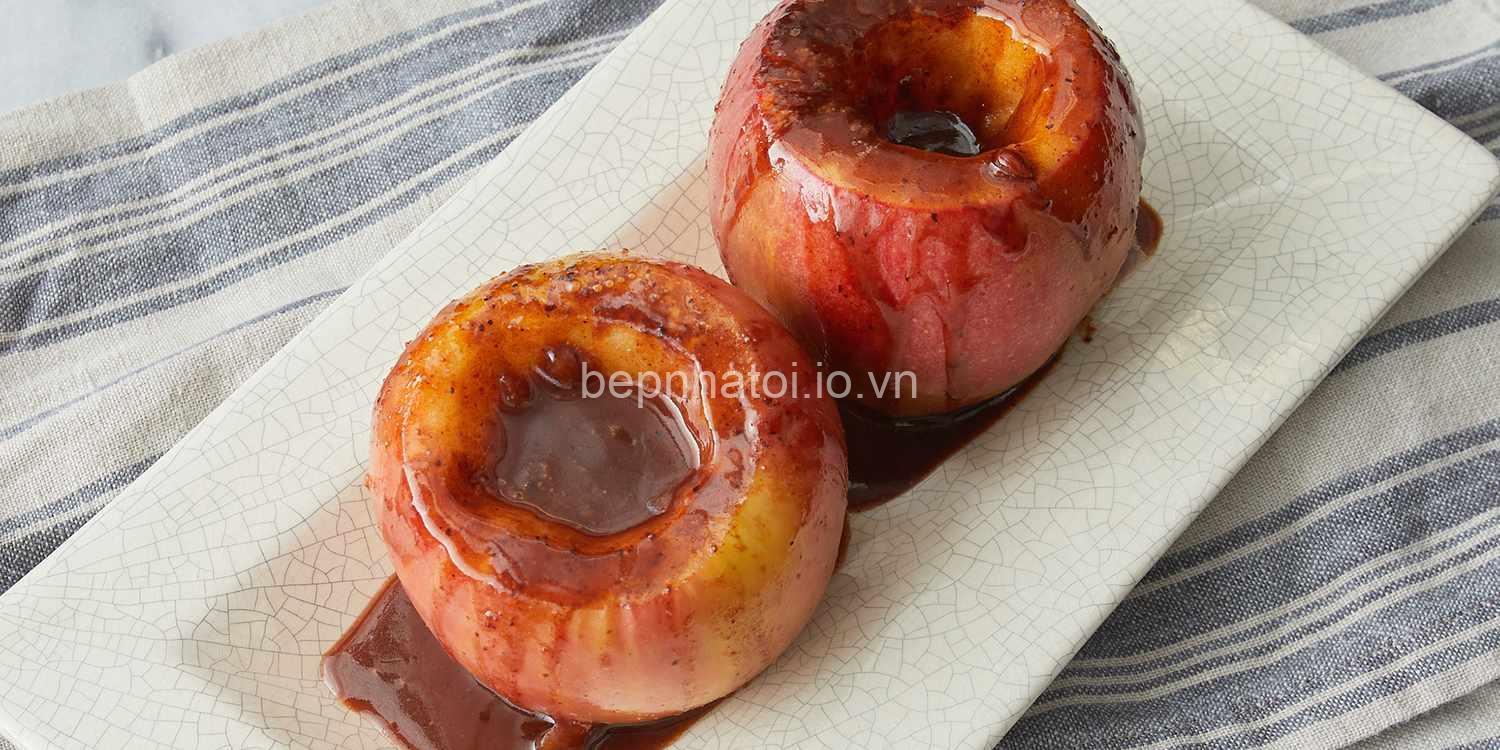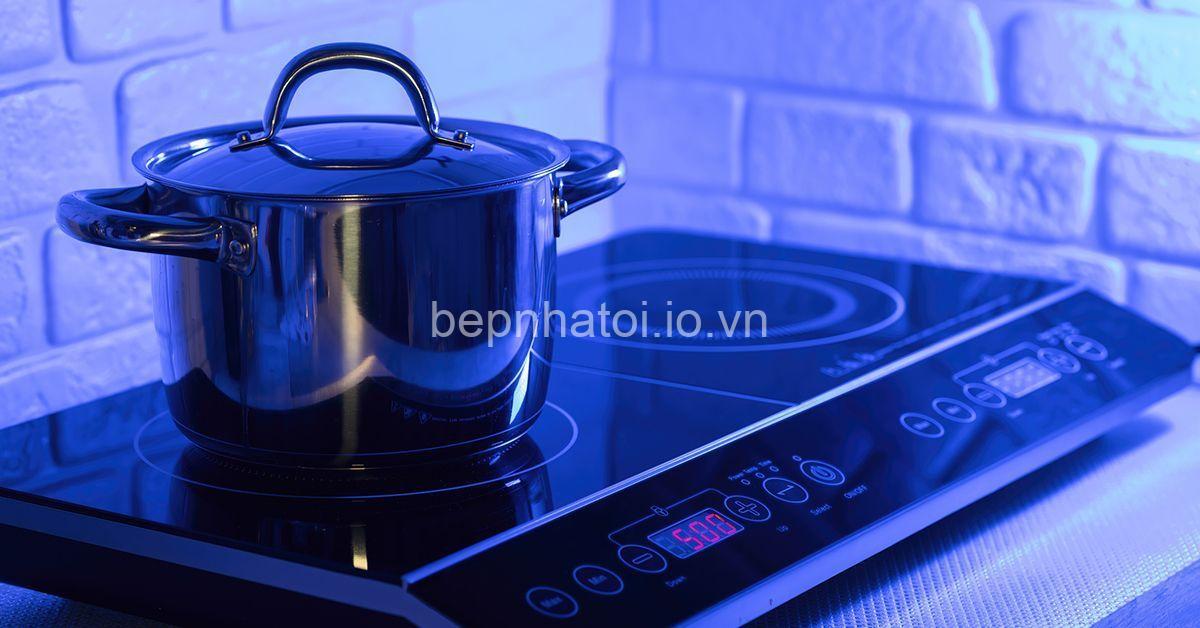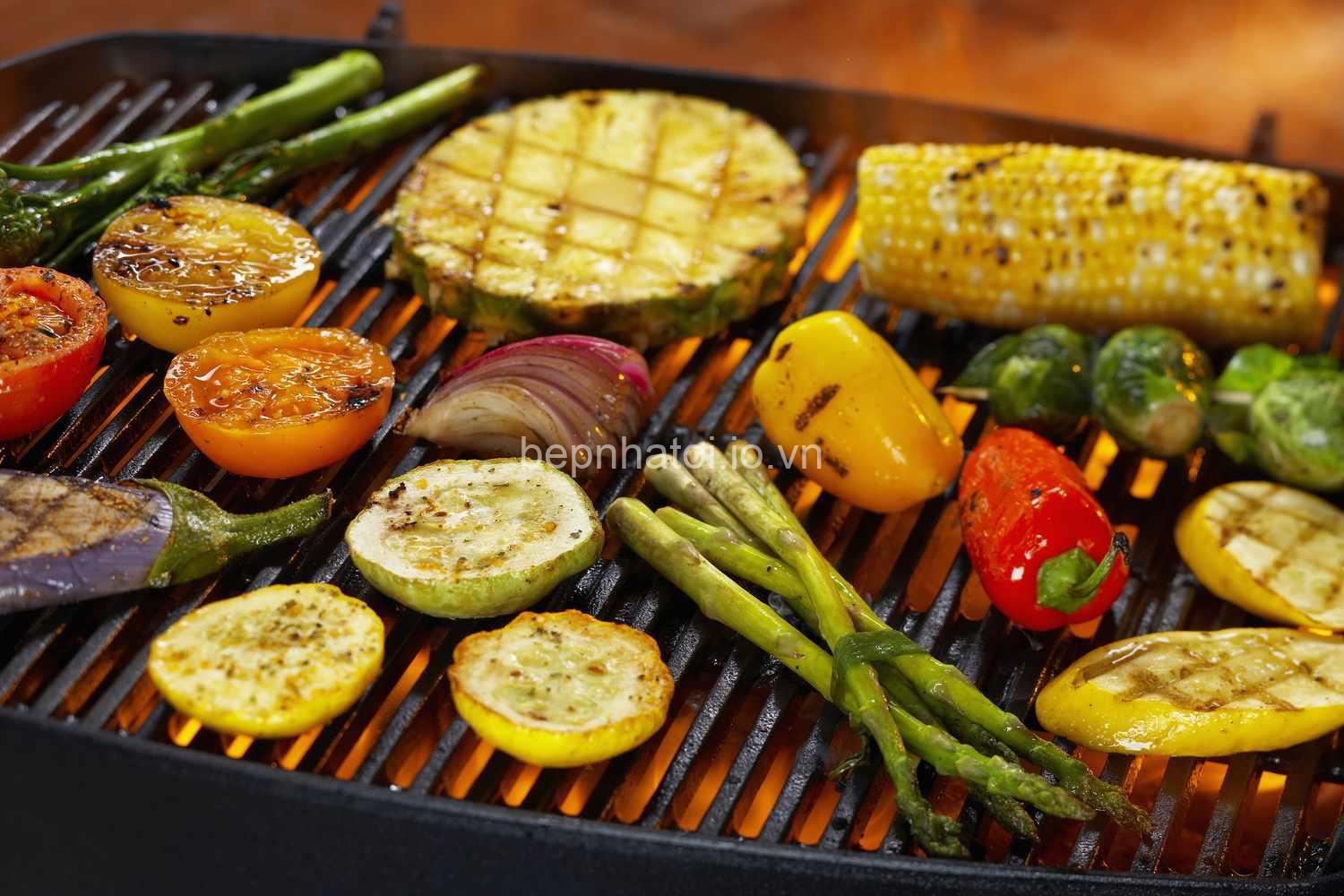
Microwave-Safe Dishes: Materials, Safety & Identification. In today’s article, bepnhatoi.io.vn will explore with you in the most detailed and complete way. See now!
Understanding Microwave-Safe Materials
You’ve probably heard the term “microwave-safe,” but what does it really mean? Microwaves are a form of electromagnetic radiation that can heat food. When microwaves interact with certain materials, they cause the molecules within those materials to vibrate, generating heat. This is why some materials are perfect for microwaving, while others pose a risk.
Think of it this way: Some materials are transparent to microwaves, like clear glass or certain types of plastic. These materials allow microwaves to pass through them, heating the food inside. Other materials, like metal, absorb microwaves, causing sparks and potential damage to your microwave. That’s why metal dishes are not microwave-safe.
Heat resistance is another key factor in microwave safety. The dish needs to withstand high temperatures without cracking, warping, or releasing harmful chemicals into your food. Non-reactivity is equally important. The material should not interact with food or release any substances that could be harmful. For example, some plastics are known to leach chemicals into food when heated, so you want to be extra careful.

Common Microwave-Safe Materials
Now that we understand what makes a dish microwave-safe, let’s explore the most common materials used for microwave-safe dishes:
Glass:
* Tempered glass and borosilicate glass are generally considered microwave-safe. They are known for their heat resistance and transparency to microwaves.
* Be cautious with glass dishes that have metal trims or decorative accents, as these could spark in the microwave. Always check the manufacturer’s instructions.
Ceramic:
* Many ceramic dishes are microwave-safe, but some aren’t. Always check the bottom of the dish for a label that says “microwave safe.” If you see a label that says “oven-safe,” it doesn’t necessarily mean it’s microwave-safe.
* Look for markings like “microwave safe” or a symbol depicting a microwave oven on the label.
Plastic:
* The most important thing to remember about plastic containers is to use BPA-free plastics. BPA (bisphenol A) is a chemical that can leach into food when heated, and it’s linked to various health concerns. Look for labels that say “BPA-free” and “microwave-safe.”
* Common microwave-safe plastics include polypropylene (PP) and polyethylene (PE). Polystyrene (PS) is often used for disposable food containers, but it’s not microwave-safe.
Silicone:
* Silicone has become increasingly popular for kitchenware, and for good reason. It’s flexible, heat-resistant, and non-reactive. Silicone bakeware and molds are excellent for microwaving, but keep in mind that silicone can stain, so choose colors carefully. Be sure to check the manufacturer’s instructions to confirm the temperature limits for your silicone product.
Paper:
* Paper products like paper towels and parchment paper are generally safe for microwave use. However, it’s best to avoid waxed paper, as the wax can melt and contaminate your food.
Materials to Avoid in the Microwave
Let’s talk about materials you should never put in the microwave:
Metal:
* Metal is a big no-no in the microwave because it absorbs microwaves, causing sparks and potentially damaging your microwave. This is why you should never put metal utensils, foil, or containers in the microwave.
* Exception: Some glass dishes have metal trims. These are typically fine as long as the metal doesn’t touch the food.
Styrofoam:
* Styrofoam melts in the microwave, and it’s not safe to consume melted styrofoam. Additionally, Styrofoam can leach chemicals into your food. Always use microwave-safe containers for food.
Other Materials:
* Wooden utensils, fabrics, and certain types of plastic, especially older, non-microwave-safe plastics, should not be placed in the microwave.
Identifying Microwave-Safe Dishes
You’ve learned what materials are safe, but how can you tell if a dish is truly microwave-safe? Here’s what to look for:
Manufacturer’s Markings:
* The most reliable way to determine if a dish is microwave-safe is to look for a label or symbol that says “microwave safe.” This marking is usually found on the bottom or side of the dish.
* Look for a symbol that depicts a microwave oven or the words “microwave safe.”
Visual Inspection:
* Inspect the dish carefully for any cracks, chips, or signs of damage.
* Check for metal parts, especially if they are touching the food.
* Avoid dishes with overly elaborate designs or decorations, as these could pose a potential risk.
The “Water Test”:
* This is a simple trick to help determine if a dish is microwave-safe. Fill a microwave-safe bowl with water and place the dish you’re testing inside. Microwave the water for a few seconds. If the dish doesn’t crack, warp, or release any unusual odors, it’s likely microwave-safe. However, this test isn’t foolproof, and it’s always best to check for manufacturer’s markings.
Tips for Microwave-Safe Practices
Now that you know how to identify safe dishes, here are some important tips to keep in mind:
- Always check the manufacturer’s instructions for specific guidelines on using your microwave-safe dishes.
- Avoid overcrowding the microwave. Give food and dishes room to circulate.
- Cover dishes with microwave-safe lids or plastic wrap to prevent splattering and help food cook evenly.
- Monitor the heating process to avoid overcooking food.
- Allow dishes to cool before handling.
Common Microwave-Safe Dishware Brands
Here are some popular brands known for their microwave-safe products:
- Pyrex: This iconic brand has been a trusted name in glass cookware for decades. Their glass products are highly durable and heat-resistant.
- Corelle: Corelle is known for its durable, lightweight, and stylish ceramic dinnerware. Many of their designs are microwave-safe.
- Tupperware: Tupperware is a well-known brand for its food storage containers. They offer a wide variety of microwave-safe options in various shapes and sizes.
Microwave-Safe Dishes and Their Uses
Microwave-safe dishes come in various shapes and sizes, catering to different needs:
- Bowls: Perfect for reheating soups, stews, and other liquids.
- Plates: Ideal for reheating leftovers or serving microwave-safe meals.
- Mugs: Great for warming up coffee, tea, or other beverages.
- Containers: Excellent for storing leftovers or pre-prepped meals.
Microwave-Safe Alternatives
While microwave ovens are convenient, some people prefer alternative heating methods:
- Stovetop: This method allows for more precise temperature control and can be used for a wider range of dishes.
- Oven: Great for baking, roasting, and other longer cooking methods.
- Air Fryer: Offers a crispy and delicious alternative to frying food.
Safety Considerations and Myths
Here are some common myths and safety considerations to keep in mind:
Myth: All glass is microwave-safe.
Reality: Only certain types of glass are safe for microwave use.
Safety tip: Check for manufacturer’s markings or use the water test.
Myth: Metal is okay in the microwave as long as it’s not touching the food.
Reality: Even a small piece of metal can cause sparks and damage your microwave.
Safety tip: Avoid using metal utensils or foil in the microwave.
Myth: It’s safe to heat food in plastic containers that don’t say “microwave-safe.”
Reality: Non-microwave-safe plastic containers can leach chemicals into your food.
Safety tip: Always choose BPA-free plastic containers labeled “microwave-safe.”
Conclusion
Understanding microwave-safe materials and practices is essential for safe and efficient microwave use. By following the tips outlined in this article, you can ensure that you’re using the right dishes and avoiding potential hazards. Remember, it’s always best to check for manufacturer’s markings and err on the side of caution.
Want to learn more about pet care or discover the best pet products? Visit my website, bepnhatoi.io.vn, and explore a wealth of information! Feel free to leave a comment below or share this article with fellow pet lovers.
FAQs – What Types of Dishes Are Microwave-Safe?
Are glass dishes always microwave-safe?
- Not necessarily. Only tempered glass and borosilicate glass are generally considered safe. Look for the “microwave-safe” label or symbol on the dish.
Can I put ceramic dishes in the microwave?
- Not all ceramic dishes are microwave-safe. Always check the bottom of the dish for a label that says “microwave safe.”
Is it safe to microwave food in plastic containers?
- Only if they are BPA-free and labeled “microwave-safe.” Microwave-safe plastics include polypropylene (PP) and polyethylene (PE).
What about metal dishes?
- Never put metal dishes in the microwave. They can cause sparks and damage your appliance. Metal trims on glass dishes are acceptable as long as they don’t touch the food.
Can I microwave food in styrofoam containers?
- No, styrofoam melts in the microwave and can release harmful chemicals into your food. Use microwave-safe containers instead.
EAVs
- Microwave – Type – Appliance
- Dishes – Material – Glass, Ceramic, Plastic, Metal
- Glass – Property – Heat-resistant, Non-reactive
- Ceramic – Property – Heat-resistant, Non-reactive
- Plastic – Property – Heat-resistant, Non-reactive, BPA-free
- Metal – Property – Reactive, Sparks in Microwave
- Microwave – Function – Heating Food
- Dishes – Purpose – Serving Food, Storing Food
- Microwave – Heat Source – Microwaves
- Glass – Type – Tempered, Borosilicate
- Ceramic – Type – Porcelain, Stoneware
- Plastic – Type – Polypropylene, Polyethylene, Polystyrene
- Metal – Type – Stainless steel, Aluminum
- Dishes – Shape – Bowl, Plate, Mug, Container
- Dishes – Size – Small, Medium, Large
- Microwave – Power – High, Medium, Low
- Dishes – Color – Clear, White, Blue, Red, etc.
- Microwave – Features – Reheat, Defrost, Cook
- Microwave – Safety – High (if using correct materials)
- Dishes – Brand – Pyrex, Corelle, Tupperware
EREs
- Glass (Entity) IS_A Material (Entity)
- Ceramic (Entity) IS_A Material (Entity)
- Plastic (Entity) IS_A Material (Entity)
- Metal (Entity) IS_A Material (Entity)
- Microwave (Entity) HEATS Food (Entity)
- Dishes (Entity) CONTAINS Food (Entity)
- Microwave (Entity) USES Dishes (Entity)
- Microwave (Entity) HAS Power (Entity)
- Dishes (Entity) HAS Shape (Entity)
- Dishes (Entity) HAS Size (Entity)
- Dishes (Entity) HAS Color (Entity)
- Dishes (Entity) HAS Material (Entity)
- Microwave (Entity) HAS Features (Entity)
- Dishes (Entity) HAS Brand (Entity)
- Microwave (Entity) HAS Safety (Entity)
- Dishes (Entity) HAS Purpose (Entity)
- Dishes (Entity) MADE_OF Material (Entity)
- Microwave (Entity) IS_A Appliance (Entity)
- Food (Entity) COOKED_IN Microwave (Entity)
- Food (Entity) SERVED_ON Dishes (Entity)
Semantic Triples
- (Microwave, IS_A, Appliance)
- (Dishes, MADE_OF, Glass)
- (Dishes, MADE_OF, Ceramic)
- (Dishes, MADE_OF, Plastic)
- (Dishes, MADE_OF, Metal)
- (Microwave, HEATS, Food)
- (Dishes, CONTAINS, Food)
- (Microwave, USES, Dishes)
- (Microwave, HAS, Power)
- (Dishes, HAS, Shape)
- (Dishes, HAS, Size)
- (Dishes, HAS, Color)
- (Dishes, HAS, Material)
- (Microwave, HAS, Features)
- (Dishes, HAS, Brand)
- (Microwave, HAS, Safety)
- (Dishes, HAS, Purpose)
- (Glass, IS_A, Material)
- (Ceramic, IS_A, Material)
- (Plastic, IS_A, Material)






